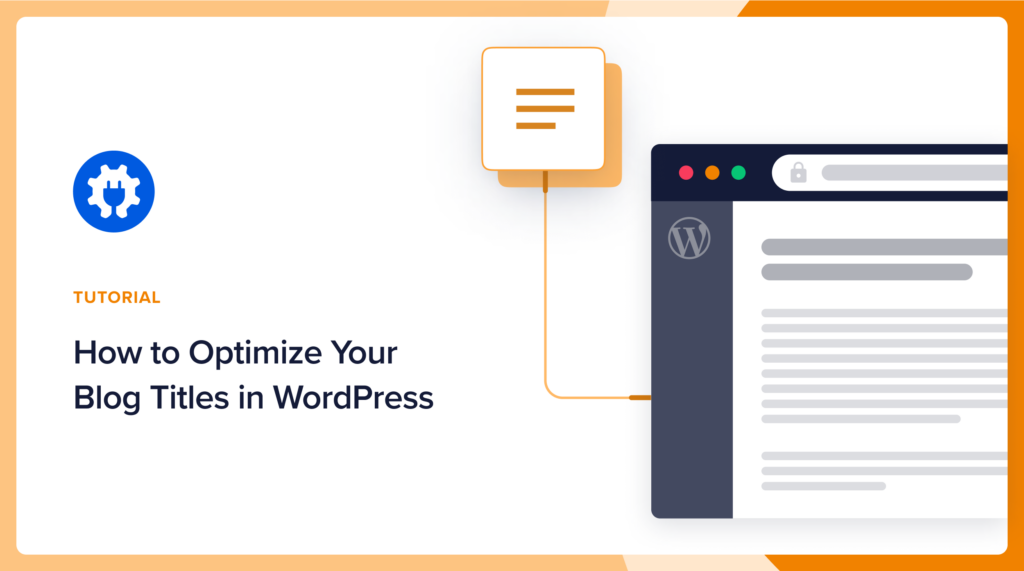Would you like to know how to optimize your blog titles right within WordPress?
Blog titles are one of the most important elements of a blog post because they help you attract readers to your content and get them to engage with it.
In this article, we will show you how you can optimize your blog titles as you work on your blog post in WordPress.
In This Article
Why are Blog Titles Important?
First impressions are crucial, especially in today’s world, where attention spans are shrinking fast. That’s why you need to craft blog titles that grab your target audience’s attention as they scroll through search engine results pages (SERPs) for answers to their queries.
Because your blog title is the first thing users see on SERPs, you should ensure it’s captivating enough to get people to click on your search listing.
Besides the attention factor, blog post titles are also important as they tell readers what your content is about. This helps increase engagement and conversions.
How to Optimize Your Blog Titles in WordPress
Ready to optimize your blog titles in WordPress?
Let’s dive right in.
1. Install All In One SEO (AIOSEO)
The first step to optimizing your blog titles in WordPress is to install a powerful SEO plugin like All In One SEO (AIOSEO).
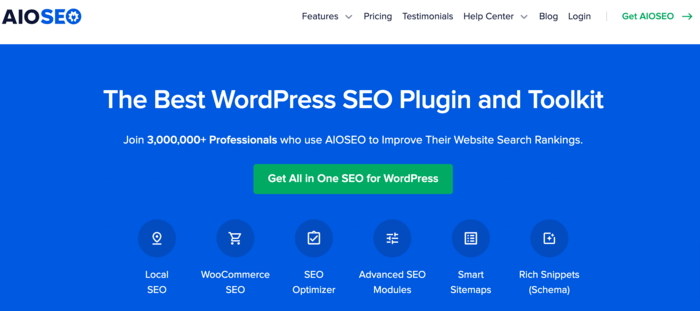
AIOSEO is the best WordPress SEO plugin on the market. The plugin is trusted by over 3 million savvy website owners and marketers to help them dominate the SERPs and drive relevant traffic to their sites. This is because the plugin has many powerful SEO features and modules to help you optimize your website for search engines and users.
The plugin’s most popular features are designed to help you rank your content easily and drive traffic to your site. These are features like:
- Next-gen Schema Generator
- FAQ and table of contents blocks
- SEO Analysis module
- TrueSEO on-page analysis tool
- And more
Another much-loved feature in AIOSEO is the Headline Analyzer, which is excellent for optimizing your blog titles without leaving WordPress. It’s a fantastic tool that can help you craft the perfect headlines when planning to create content for your blog.
For step-by-step instructions on how to install AIOSEO, check out our installation guide.
2. Run Your Blog Title Through the Standalone Headline Analyzer
After you’ve installed AIOSEO, the next step to optimizing your blog titles is to use the Standalone Headline Analyzer. You can find this handy tool by going to your AIOSEO menu » SEO Analysis » Headline Analyzer.

Next, type (or copy and paste) your blog title into the Headline Analyzer and click Analyze. The Headline Analyzer will then give you a score for your headlines and recommendations on the word balance needed to score higher.

The Headline Analyzer will also give you an analysis of the type of headline you have crafted.
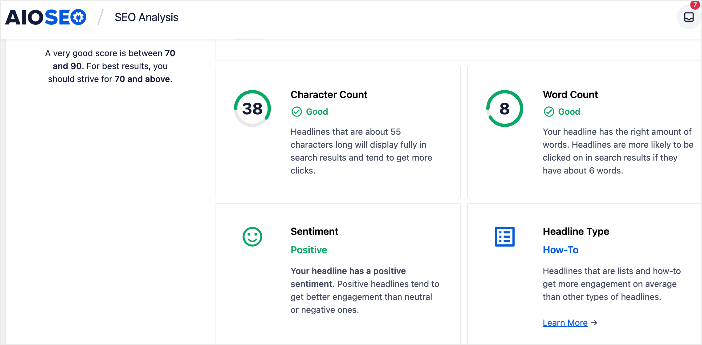
All this is important information you can use to optimize your blog titles.
3. Optimize Your Blog Titles in the Post Editor (Optional)
In a time crunch and need to get your article ready to publish ASAP?
Then you’ll be glad to know that our Headline Analyzer also works in the WordPress editor.
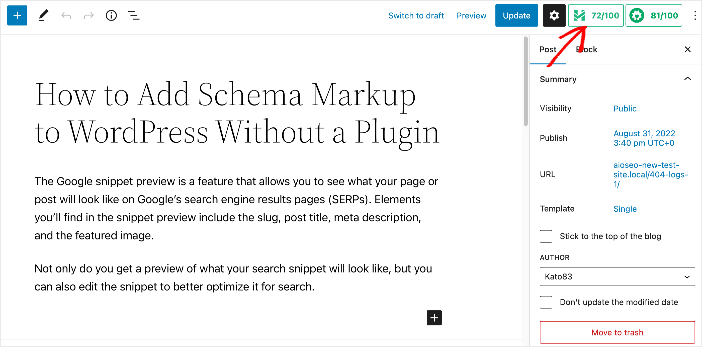
Clicking on the Headline Analyzer icon will open the Headline Analyzer in the sidebar, making it easier to optimize your blog title as you work on your article.

Once you have your headline score and the Headline Analyzer’s analysis, follow the recommendations to optimize your blog title.
And that’s it!
You’ve optimized your blog titles right inside the WordPress Post Editor.
4 Tips for Highly Effective Blog Titles
Before we wrap up this tutorial, let’s look at some recommended ways to craft catchy blog titles that drive traffic and encourage engagement.
Include Your Focus Keyword
Including your focus keyword is critical to helping your blog post rank high on SERPs. It also helps you prove search intent to search engines and users. If possible, front-load your focus keyword to appear as close to the beginning of your blog post title as possible.
Keep It Short But Descriptive
Keep your blog post titles short but descriptive of your content. This will ensure your blog titles aren’t cut off when displayed on SERPs.
Tip: You can use our SEO Preview tool to check how well-optimized your search snippets look on SERPs.
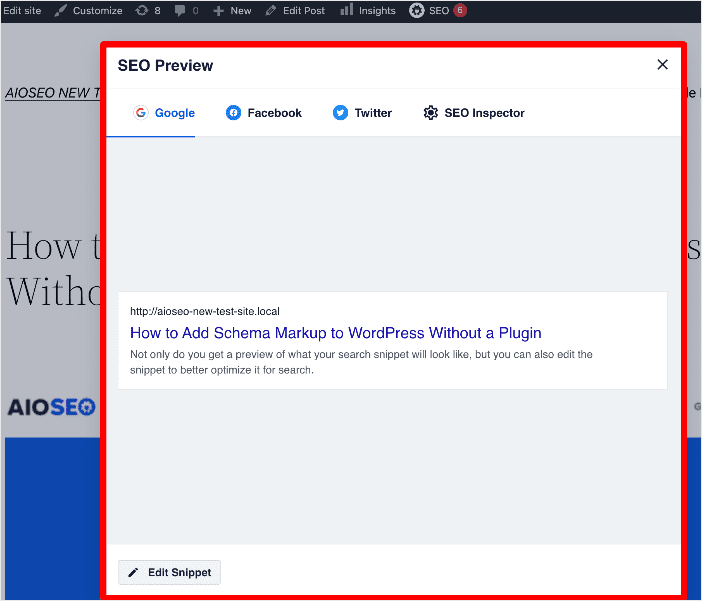
In conjunction with the Headline Analyzer, this will help you optimize your headline length for readability on SERPs.
Use Your Headline to Build Anticipation
Your headline is the first thing people see on SERPs. With that in mind, use it to build anticipation of what searchers should expect when they click on it. To help with this, use language that inspires curiosity or wording that paints a picture of your content.
Leverage AI to Craft Optimized Blog Titles Faster
If you struggle to come up with blog post titles or find it time-consuming, you can turn to AI for help. If you’re an AIOSEO user, you can do this using our ChatGPT-powered SEO Title/Description generator.
All you have to do to generate blog titles is click on the robot icon next to the Post Title field.
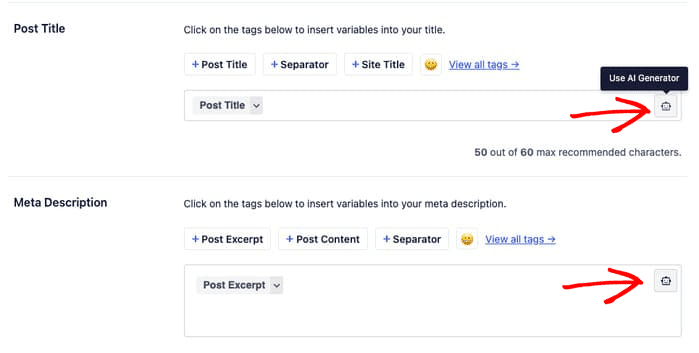
When you click on the robot icon, AIOSEO will generate 5 SEO titles you can use as your blog post title.
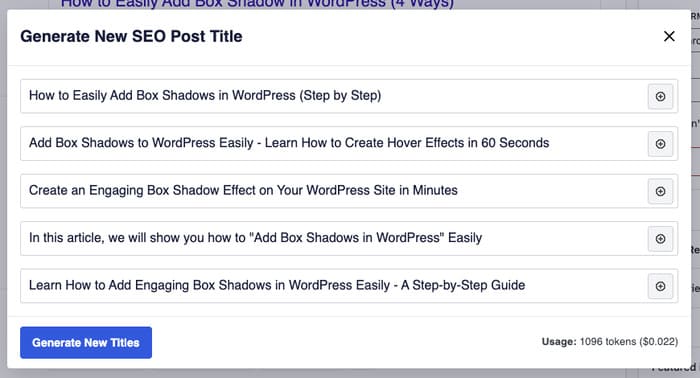
For more information on using this revolutionary tool, check out this tutorial.
Optimize Your Blog Titles For More Traffic, Engagement, and Revenue
Optimizing your blog post titles is a crucial element in your SEO strategy. Doing so will help boost your clickthrough rates (CTR), drive traffic, and help increase your revenue.
We hope this post has helped you learn how to optimize your blog titles in WordPress. You may also want to check out other articles on our blog, like our expertly curated list of headline analyzers and how to add emojis to your SEO titles.
If you found this article helpful, then please subscribe to our YouTube Channel. You’ll find many more helpful tutorials there. You can also follow us on Twitter, LinkedIn, or Facebook to stay in the loop.
Disclosure: Our content is reader-supported. This means if you click on some of our links, then we may earn a commission. We only recommend products that we believe will add value to our readers.
